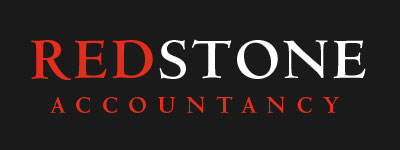
How will the VAT reverse charge
affect your business?

VAT reverse charge scheme
If your business is VAT registered and operates within the Construction Industry Scheme (CIS), you may need to change the way you charge and reclaim your VAT from the 1st March.
The new rules will affect most businesses in the supply chain and especially their cash flow in the early stages of the scheme.What is the VAT reverse charge scheme?
Well, rather than everyone in the supply chain paying, charging and then claiming back the VAT across the entire project, the sole responsibility falls to the end customer to pay the VAT man. For example: The reverse charge applies, and NO VAT is charged when: a) A subcontractor provides a service to another subcontractor. b) A subcontractor provides services to the main contractor. The reverse charges do not apply, and VAT is charged when: The main contractor provides their services to the end customer.How do I identify the end customer?
We would suggest you identify your client’s status right at the beginning of the partnership and highlight it on the initial quote and all relevant paperwork thereafter. Don’t forget, when a project is subject to the reverse charge, make sure it is clear on the invoice and don’t charge the VAT. If you are involved with a new build or a zero-rated project, then the reverse charge will not apply.My project is subject to CIS deductions, how will this affect me?
Reverse charges are applied to the whole invoice when CIS deductions (20% or 30%) are applicable to your work. This includes both supplies that are subject to CIS (e.g. Labour) and those and which aren’t (e.g. Materials).When will the new scheme affect my business?
You will need to comply with the new scheme if you answer yes to the below questions 1. Does your supply to your customer fall within the CIS? 2. Is your customer registered for CIS? 3. Is your customer VAT registered? 4. Is your customer the end client? If you answered No to any of these questions, then the normal VAT rules apply.

What happens when I invoice my client?
Rules for Subontractors
If your customer is the end client… you will charge VAT at the standard rate and include this amount on your VAT return. If your customer isn’t the end client… you will not charge VAT on your invoice and will not include a value on your VAT return for this transaction.Rules for Contractors
If your customer is the end client… you will charge VAT at the standard rate and include this amount on your VAT return. you will also need to include the VAT on your reverse supply from the subcontractor. You reclaim this VAT from HMRC on your VAT return.How will this affect my cash flow?
In the short term, this could affect your cash flow as when using the reverse charge scheme, you will not be charging or receiving the VAT from your CIS customers. Some businesses use the money generated from the VAT payments to support their cash flow across that quarter. After the 1st of March, this money will no longer be collected potentially causing a shortfall in funds until you reclaim your VAT at the end of the quarter. Warning: Subcontractors who also have CIS deductions at 20% (net status) and make reverse charge supplies could be hit the hardest.Improving your cash flow from the 1st of March
1. Rather than quarterly VAT returns you can move to monthly. Although this can create additional administration, it will enable you to reclaim your money quicker. 2. Funding. To cover the first quarter's VAT payment deficit, Redstone has identified a range of funding options that will help with cash flow over this initial period including Invoice Factoring 3. Cash flow forecasts are a great way to highlight times when cash will be tight enabling your business to prepare for it. Find out how Redstone can help your business through the transition to the reverse charge scheme today and maximise your cash flow from the 1st March. 0161 667 4911 enquiries@redstoneas.com.
